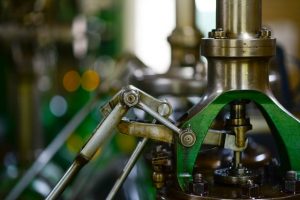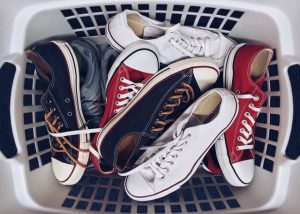What equipment would you need to open a well-functioning shoe factory? I will help you through a mass manufacturing shoe factory and detail all of the equipment you will have to get to get it done correctly. You can also make shoes via hand tools but this article will focus on the machines used.
I will share with you exactly what you will need to do to make a pair of conventional die-cut cold cemented womens sneakers. This is an easy shoe created out of just die cut components. The outsole is a one-piece rubber cupsole using a die cut midsole on the inside and channel stitching.
First, contemporary shoe production is based heavily on sub-contracted factories for several technical manufacturing. For instance, the outsole units will be manufactured by the shoe manufacturers however the outsole tooling is going to be produced somewhere else; the rubber components will be bought by an organization which specializes in rubber pressing. The shoe factory controls the elements to guarantee the uppers and outsoles all fit together properly.

Cutting and Marking
Back within the shoe factory, the very first operations in the production process will be the cutting and marking operations. The factory will require cutting presses, also referred to as clicker cutting machines. The clicker press is among the conventional pieces you may notice in each shoe factory. These cutting-edge presses demand cutting dies for every shoe layout part. For example, a pair of womens ankle boots will have a different layout than a pair of womens casual shoes. A brand new technology for cutting edge is the computer controlled drag knife cutter. These machines utilize a vacuum table to hold stuff in place while the blade cuts all of the pattern components. This technology is essential for custom mass manufacturing.
When the shoe components are cut they have to get processed. Alignment marks are screen printed on components and some other logos are included. Logos are able to be silkscreen printed, radio frequency welded or embroidered on the trim components.
Stitching
When the pieces are prepared and piled into assembly kits, then it’s time for stitching. The fundamental electric sewing machine does the majority of the heavy lifting. Together with the stitching procedures broken down into several smaller operation, the employees quickly master their particular tasks. Operated by a seasoned sewer these fundamental machines make magic happen.
If managed by a newcomer, the same sewing machine can cause a catastrophe in the process. The sewing machines are available in many forms: post, long arm, short arm, etc. The sewing line will probably have hundreds of those machines, based on the intricacy of the shoe layout. The fashion of machine may also be contingent on the particular operations necessary to create each shoe layout.
When the stitching is completed, it’s time to place the form of this toe box and heel counters. These machines heating the thermostatic counters within the heel and toe then clamp the shoe to keep the shape in place.
Together with the top almost complete, you will then require a particular sewing machine to complete it. The Strobel sewing machine has been invented by a man named…you guessed it… Strobel! This system is used to sew the underside fabric onto the top. This closes the top. The cloth underside or “sock” is indicated with alignment lines to guarantee the top is right and not twisted. Now the top is prepared for assembly and lasting.

Assembly
With the shoe prepared for assembly, it’s the right time to bring out the heavy gear. The fundamental assembly line is about 100 yards long. On the front of the line, you’ll discover a steamer to soften the shoe uppers, preparing them to last. The durable machines are utilized to pull the uppers down tight on the shoe last.
The toe durable equipment is the centerpiece of such equipment. This system takes hold of the top and physically pulls it down and all around. The machine concurrently pulls the top into position whilst injecting hot adhesive to repair the uppers into position on the last.
When the toe lasting is finished, the sneakers heel and waist might also be hauled into position by hand machine or operation procedures. Adhering to the lasting operations, the lasted upper is put into the first of their tunnels on the line. In cases like this, a cooling tube which shrinks the top down to the past even tighter. Assembly of mens sandals will differ mens boat shoes and again to a pair of womens heels.
Primer and Cement
The continued uppers and outsoles are on the conveyor line collectively, each getting two coats of primer and cement. After each application, the pieces are put back online to journey through a heat tubing to wash the components.
When the pieces are fully primed and coated with cement it’s the right time to join the components together. An employee takes the top and only in-hand, fitting them together. After the components are all fit, a pressing performance guarantees that the bonding surfaces are totally connected.
Pressing
The pressing operation compresses the base, sides, and heel of the sole and top collectively. To place the bond, the lasted upper with the base attached is often set in a chiller unit. Once from the chiller unit, the shoe is de-lasted by hand or by machine.
Based upon the plan of this shoe, there might be only a couple steps left. The shoe can get station stitching using a distinctive oversized sewing machine which could stitch throughout the rubber outsole and the whole depth of the top.
Last, the shoe can pass through a drier oven and UV light tunnel to make sure there’s not any chance of mould growth while it was in transit.